In the heart of India, where the challenges of poverty, deforestation, and rural exodus intersect, a remarkable transformation is taking place. The Hans Foundation, a pillar of support for marginalized communities, embarked on an ambitious mission to revitalize the impoverished village of Goom. Faced with a dwindling workforce, environmental degradation, and economic despair, the village posed a formidable challenge that would test the resilience and ingenuity of all involved.
Through the creation of the Hans Mahila Kisan Nursery, the foundation not only aimed to restore the region’s ecological balance but also to empower the village’s women and youth. The following case study explores the intricate journey of building a community-driven initiative from the ground up—overcoming obstacles and ultimately establishing a sustainable model for rural development and environmental conservation.
Discover how a barren landscape was transformed into a flourishing nursery, offering livelihoods, protecting the environment, and reigniting hope in a community that was yearning for change.
Foundation Overview: The Hans Foundation’s Legacy of Community Empowerment
The story of the Hans Mahila Kisan Nursery in Goom is just one example of how The Hans Foundation has been making a lasting impact across India. Established in 2009, the foundation is dedicated to improving the quality of life for marginalized and underserved communities throughout the country. Over the past 15 years, the foundation has implemented a wide range of programs across various sectors, including education, healthcare, disability livelihood, and environmental conservation.
The foundation's mission centres on the holistic development of remote and underserved communities, with particular attention to initiatives for children, women, and persons with disabilities. Committed to creating a more equitable society, The Hans Foundation ensures that no one is left behind in the pursuit of social justice and development. Aligning its efforts with the United Nations’ Sustainable Development Goals (SDGs), the foundation contributes significantly to the global agenda for a better world.
In terms of community development and environmental conservation, The Hans Foundation has made remarkable strides, reaching over 12,000 villages, 24 cities, and 25 states, and impacting 40 million beneficiaries. Notable among its initiatives is the Forest Fire Prevention and Mitigation Program, which seeks to reduce forest fire incidents, protect biodiversity, and support local livelihoods. Through a strong emphasis on community engagement and co-creation of solutions, The Hans Foundation ensures that its interventions are both culturally relevant and sustainable.
Background of the Initiative: Selecting Goom Village for Sustainable Development
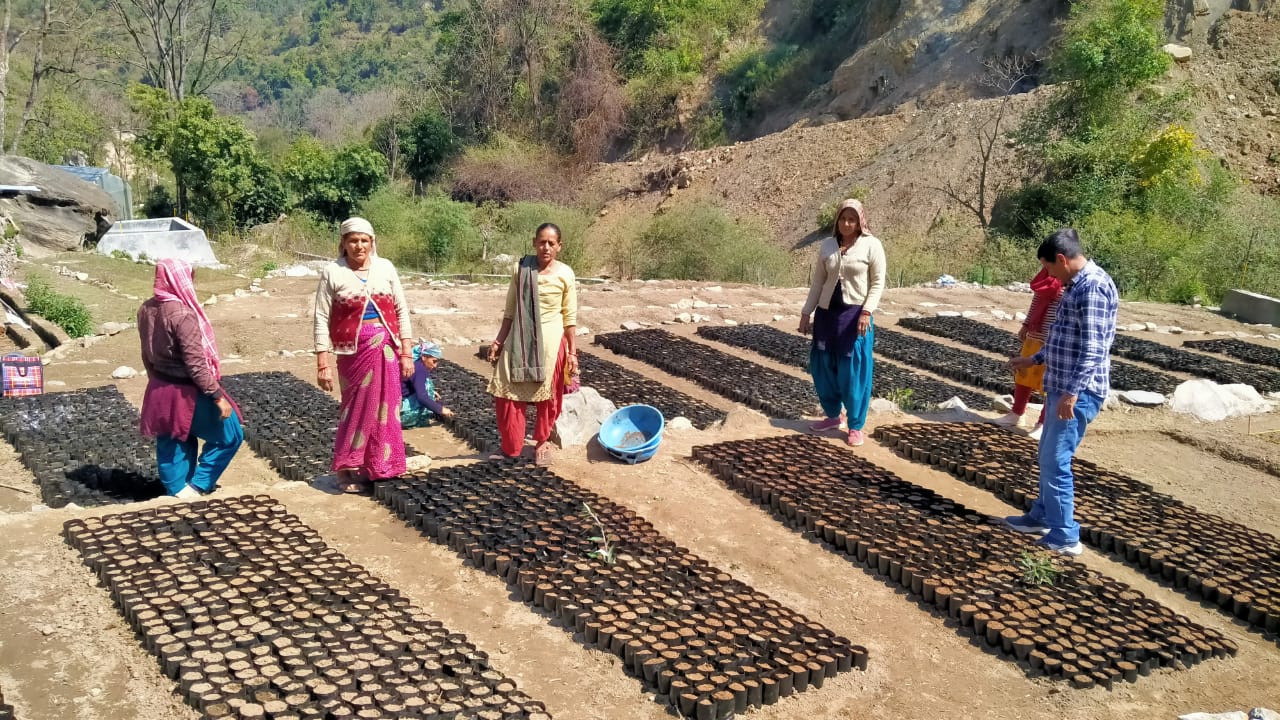 The Hans Foundation’s decision to support the nursery initiative in Goom Village was driven by a combination of factors reflecting their commitment to community-led environmental and economic solutions. Ms. Seema Singh, Group Senior Manager - North Region at The Hans Foundation, explains, "The Hans Foundation was motivated to support the Goom village nursery initiative because it was a community-led initiative, reflecting the residents' commitment to tackling local environmental and economic issues. We were particularly interested in how the initiative addressed deforestation and forest fire risks while creating sustainable livelihoods, especially for women. Additionally, the opportunity to build local capacity through training and resources aligned with our mission to empower grassroots initiatives."
The Hans Foundation’s decision to support the nursery initiative in Goom Village was driven by a combination of factors reflecting their commitment to community-led environmental and economic solutions. Ms. Seema Singh, Group Senior Manager - North Region at The Hans Foundation, explains, "The Hans Foundation was motivated to support the Goom village nursery initiative because it was a community-led initiative, reflecting the residents' commitment to tackling local environmental and economic issues. We were particularly interested in how the initiative addressed deforestation and forest fire risks while creating sustainable livelihoods, especially for women. Additionally, the opportunity to build local capacity through training and resources aligned with our mission to empower grassroots initiatives."
This alignment with The Hans Foundation’s goals made Goom Village a clear choice. The selection for the Hans Mahila Kisan Nursery project was driven by several critical factors::
- Agricultural Dependence: With 60 families relying on agriculture and livestock, there was a need for sustainable practices to enhance economic stability.
- High Migration Rates: Significant migration due to lack of facilities and opportunities highlighted the need for local employment and improved living conditions.
- Aging Population: The elderly demographic created challenges in maintaining a productive workforce, making it crucial to engage younger residents and women in meaningful work.
- Environmental Concerns: The village’s need for environmental conservation, especially in forest fire mitigation, aligned with the initiative's dual focus on ecological and economic benefits.
These conditions made Goom Village an ideal choice for fostering community resilience and sustainability.
Addressing Key Challenges
The Hans Mahila Kisan Nursery initiative aimed to address several challenges in Goom Village:
- Economic Instability: By creating jobs and providing a stable income, particularly for women, to counter the village’s reliance on agriculture and high migration rates.
- Environmental Degradation: To combat issues like deforestation and forest fire risks by growing native and valuable plants, promoting environmental conservation.
- Lack of Infrastructure: To improve essential facilities and enhance the quality of life, addressing the decline in infrastructure and reducing migration.
- Community Engagement: To empower local residents, especially women, through training and involvement in nursery management and sustainable practices.
- Scepticism and Experience: To build confidence and demonstrate successful plant cultivation, overcoming initial skepticism due to a lack of experience.
In short, the initiative sought to create a sustainable model benefiting both the local economy and environment.
Initiative Proposal
The initial proposal for the Hans Mahila Kisan Nursery was drafted by the villagers of Goom, with significant contributions from key figures in the community. Notably, the leadership of Smt. Rajni Devi, the President of the nursery committee, and Shri Kuldeep Singh Bisht, the village Pradhan, played crucial roles in articulating the community's vision and needs.
The main environmental and economic issues addressed in the proposal that aligned with The Hans Foundation’s mission included:
- Environmental Degradation: The need for reforestation and ecosystem restoration to counteract deforestation and forest fire risks.
- Economic Challenges: The proposal aimed to create local jobs and enhance economic resilience amidst high migration rates and a lack of sustainable livelihoods.
- Community Empowerment: Emphasis on capacity building, especially for women, to foster engagement and ownership, aligning with The Hans Foundation’s goals of empowerment and gender equality.
- Sustainable Practices: Promotion of sustainable agriculture and environmental stewardship to support long-term ecological balance and community well-being.
Inception and Approval
During the physical inspection of the proposed nursery site for the Hans Mahila Kisan Nursery, several key factors were assessed to ensure its suitability. The evaluation focused on land suitability, including soil quality, drainage, and topography, to support plant growth. The availability of reliable irrigation facilities and the site's accessibility for transporting materials were also critical. Additionally, the potential environmental impact, including contributions to local biodiversity and measures to prevent soil erosion, was considered. The community's needs and the alignment of the initiative with local aspirations were key factors as well.
The Forest Officer's recommendation was pivotal in the approval process, providing expert assessment and formal documentation that influenced the final decision. Their evaluation highlighted how the nursery aligned with broader conservation goals. Other criteria included the community proposal outlining the initiative's benefits, compliance with local regulations, and support from The Hans Foundation, which demonstrated a commitment to the nursery’s success and sustainability.
Formation of the Executive Committee
The selection of committee members for the Hans Mahila Kisan Nursery was conducted during an open meeting to ensure transparency and inclusivity. Community members, including landowners and volunteers, were invited to express their interest in serving on the committee. The process was democratic, involving nominations and votes, which helped in selecting individuals who were genuinely committed to the initiative.
Committee members were assigned several key roles and responsibilities. They were tasked with overseeing the nursery’s operations, managing resources, and providing leadership to guide the initiative's development. They also played a crucial role in engaging with the community, raising awareness, organizing meetings, and fostering participation. Financial oversight was another critical responsibility, with members managing budgets, fundraising, and maintaining financial records. Additionally, they facilitated training sessions to share knowledge on nursery management and sustainable practices, thus empowering the community.
Involving landowners and volunteer firefighters brought significant benefits. Landowners provided valuable resources and local agricultural expertise, which were essential for the nursery's success. Their participation also helped build community trust and encouraged broader engagement. Volunteer firefighters contributed their knowledge in fire management, which was crucial for protecting the nursery and ensuring community safety. The collaboration between these diverse members enhanced the committee’s problem-solving capabilities and led to more innovative approaches to managing the nursery.
Training and Capacity Building: Equipping the Committee for Effective Nursery Management
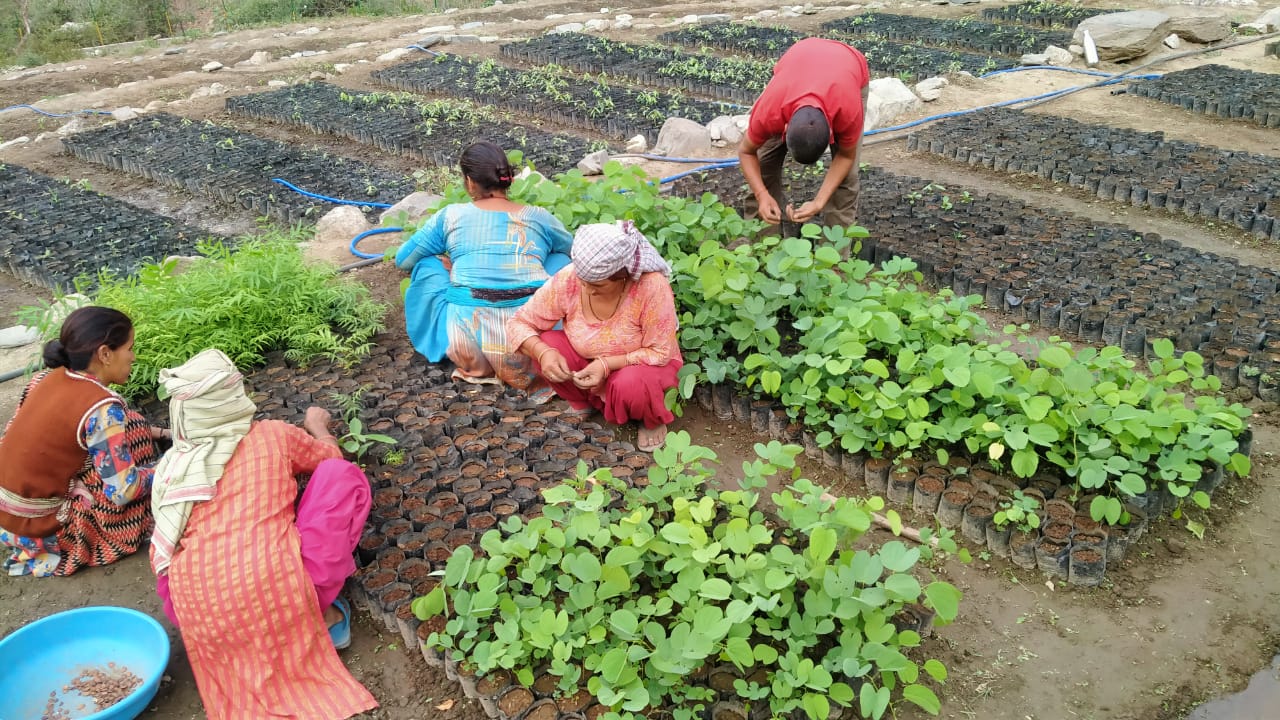 The training provided to the committee members of the Hans Mahila Kisan Nursery was comprehensive and covered essential aspects of nursery management. The specific training modules included:
The training provided to the committee members of the Hans Mahila Kisan Nursery was comprehensive and covered essential aspects of nursery management. The specific training modules included:
1. Land Preparation - Techniques for preparing the land for planting.
2. Seed Sowing - Methods for effectively sowing seeds to ensure successful germination.
3. Bed Construction - Guidelines for constructing beds suitable for plant growth.
4. Polybag Filling - Instructions on how to fill polybags for sapling cultivation.
The training was structured to provide both theoretical knowledge and practical skills, ensuring that the committee members could apply what they learned directly to their nursery operations. The Hans Foundation played a pivotal role in delivering this training, which was crucial for building the committee's capacity to manage the nursery effectively.
As for feedback from the committee members, the training was beneficial, as it equipped them with the necessary skills to overcome initial challenges and successfully cultivate a variety of saplings.
Nursery Activities and Collaboration
The nursery selects species based on environmental and economic criteria. Chosen species are either native to or well-adapted to the local ecosystem, enhancing biodiversity and supporting habitat restoration. For example, Baanj (Oak) and Kachnar offer ecological benefits such as supporting wildlife and improving soil health. Economically, species like mulberry (Sahtoot) and Kachnar are valued for their market demand and industrial uses. The ease of cultivation is also considered for successful management.
The nursery grows 10,000 saplings of Baanj, 6,000 of Kachnar, and 2,500 of Amwala (Emblica officinalis), among others. These species aid in soil conservation, prevent erosion, and contribute to carbon sequestration, helping to mitigate climate change. They also enhance biodiversity by supporting local wildlife. Economically, the sale of saplings provides income for the community and promotes sustainable livelihoods, reducing migration and strengthening local economies. The nursery’s approach effectively combines environmental conservation with economic benefits.
Addressing Initial Scepticism: Overcoming Challenges with Leadership and Support
The main sources of scepticism and uncertainty regarding the success of the Hans Mahila Kisan Nursery initiative included:
1. Lack of Prior Experience: The committee members, particularly the women involved, had little to no prior experience with plant production and nursery management. This lack of familiarity with the processes and techniques necessary for successful cultivation led to doubts about their ability to manage the nursery effectively.
2. Community Doubts: There may have been general scepticism within the community about whether the initiative would yield tangible results, especially given the historical challenges faced by the village, such as high migration rates and limited resources.
3. Environmental Challenges: The initial condition of the land, which was overrun with invasive species, posed a significant challenge to starting the nursery.
The committee, under the leadership of Rajni Devi and with the support of The Hans Foundation, cleared the land of invasive species and prepared it for planting. This hands-on approach demonstrated their commitment and capability, gradually building confidence in the initiative's potential for success.
Leadership and Support
The Hans Foundation played a crucial role in the Hans Mahila Kisan Nursery initiative's success by providing continuous support in several key areas. They offered detailed training on nursery management, technical guidance to address challenges, and financial assistance for equipment and seeds. The foundation also organized village-level meetings to raise awareness and foster community involvement.
To maintain motivation and engagement among villagers, the leadership team, including Smt. Rajni Devi and Shri Kuldeep Singh Bisht, used several strategies. They involved community members in decision-making, celebrated small successes to boost morale, maintained open communication with regular updates, and encouraged a learning-oriented approach to handle both achievements and setbacks.
This combined effort of The Hans Foundation’s support and the leadership team's effective strategies ensured the initiative's success and sustained community engagement.
Community Engagement and Awareness: Tools and Methods
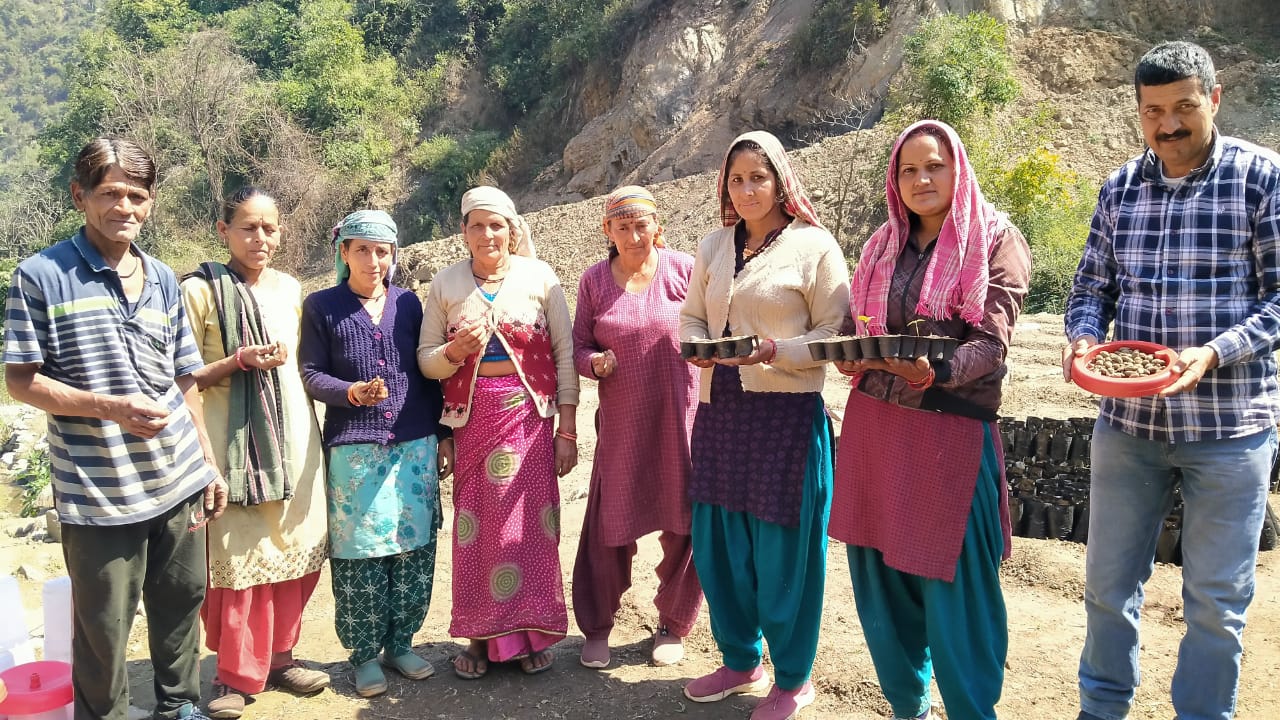 The Hans Mahila Kisan Nursery initiative employed several effective community engagement tools and methods. Village-level meetings were regularly organized to discuss the initiative's objectives and the importance of forest fire prevention, serving as a platform for information sharing and community involvement. Open forums allowed community members to participate in discussions about the nursery's establishment and management, promoting transparency and inclusivity.
The Hans Mahila Kisan Nursery initiative employed several effective community engagement tools and methods. Village-level meetings were regularly organized to discuss the initiative's objectives and the importance of forest fire prevention, serving as a platform for information sharing and community involvement. Open forums allowed community members to participate in discussions about the nursery's establishment and management, promoting transparency and inclusivity.
The Hans Foundation conducted training sessions that provided both technical knowledge and hands-on learning experiences, helping build skills and fostering a sense of community ownership. Awareness campaigns were also implemented to educate the community about the nursery's benefits and the importance of environmental conservation, encouraging greater participation.
Additionally, feedback mechanisms were established to ensure that community members could voice their concerns and contribute to decision-making. Celebrating milestones such as successful sapling growth and sales helped maintain enthusiasm and reinforce community spirit. Collaborative activities, including land preparation and seed sowing, further strengthened teamwork and commitment.
Together, these tools and methods effectively engaged the community, fostering a sense of ownership and collaboration that was crucial for the initiative's success.
Village-Level Meetings: Organizing and Promoting Community Involvement
The village-level meetings organized by the Hans Mahila Kisan Nursery and The Hans Foundation played an essential role in raising awareness and fostering a proactive community spirit. These meetings were organized with active participation from committee members, especially women, who played key roles in promoting the initiative and mobilizing community members. Promotion was done through word-of-mouth and community networks, ensuring broad attendance from local residents, landowners, and volunteers. Regular scheduling of these meetings allowed for continuous updates and addressed concerns, maintaining ongoing communication with the community.
Key topics covered in the meetings included the importance of environmental conservation, particularly regarding forest fire prevention and the benefits of tree planting. Updates on the nursery's activities, such as sapling cultivation and management progress, were shared to build transparency and trust. Discussions also focused on encouraging community involvement in supporting the nursery through planting activities and promoting sapling sales.
These meetings significantly contributed to raising awareness and fostering a proactive community spirit by encouraging residents to actively engage in environmental stewardship and local development. They helped build community cohesion by bringing residents together to discuss shared goals and challenges, overcoming initial scepticism. The active participation of women not only empowered them but also showcased their leadership capabilities, contributing to a shift in perceptions about women’s roles in community development and environmental management.
Financial Management: Strategies and Future Plans
The Hans Mahila Kisan Nursery implemented several strategies to ensure financial prudence and support its operations:
- Strategies for Financial Prudence: The committee opened a savings account at PNB Chaulyusain with an initial deposit of INR 28,000 to support ongoing operations and future initiatives. Budgeting and financial planning covered essential expenses, while revenue generation from sapling sales is anticipated to reinvest about INR 100,000 into the nursery.
- Initial Contribution's Role: The initial INR 28,000 helped procure essential materials and equipment, providing a financial cushion and allowing the committee to focus on operations without immediate income pressure.
- Plans for Diversifying Funding Sources: The nursery plans to reinvest revenue from sapling sales to expand operations, explore additional partnerships, and improve training and productivity.
Expansion and Future Vision
The Hans Mahila Kisan Nursery has outlined several specific plans for expansion to ensure sustainability and provide employment opportunities:
Site Expansion: Plans include increasing the nursery's land area from the current 10 Nali (0.2 Hac.) to accommodate more sapling varieties and enhance production capacity.
Infrastructure Development: Upgrades to irrigation facilities and the addition of new greenhouses or polyhouses are planned to improve sapling growth and operational efficiency.
Diversification of Plant Species: Introducing a broader range of plant species to meet market demand and environmental needs, such as medicinal plants, fruit trees, and ornamental plants.
Contribution to Sustainable Employment
Expanding the Hans Mahila Kisan Nursery will create new jobs in nursery management, fieldwork, and sales, providing stable employment for local residents. The plan includes training programs to develop skills in horticulture and sustainable agriculture, offering long-term career opportunities and enhancing local expertise.
Measures for Scalability and Sustainability
To ensure scalability and sustainability, the nursery is focusing on strong community engagement and a robust financial plan that includes diversifying funding sources and reinvesting revenue. Environmental management practices will minimize the ecological footprint, and regular monitoring will help adapt operations for continued success and impact.
Partnerships and Key Learnings
The major partnerships formed during the Hans Mahila Kisan Nursery initiative and their key takeaways include:
- The Hans Foundation:
- Role: Provided financial support, training, and technical guidance essential for the nursery’s setup and operation.
- Takeaway: Demonstrates the critical role of external support in empowering grassroots initiatives and building necessary skills for sustainability.
- Local Government (Block Development Office Dwarikhal):
- Role: Assisted in securing a market for the nursery's saplings.
- Takeaway: Highlights the value of local government partnerships in enhancing initiative visibility and facilitating resource access.
- Community Members:
- Role: Actively participated in various nursery operations, from land preparation to seed sowing.
- Takeaway: Shows the importance of community engagement in fostering ownership and ensuring long-term initiative success.
- Environmental Experts and Trainers:
- Role: Provided critical training on nursery management practices.
- Takeaway: Underlines the necessity of expert knowledge for overcoming challenges and improving practices.
- Financial Institutions (e.g., PNB Chaulyusain):
- Role: Managed funds and supported nursery operations through a savings account.
- Takeaway: Emphasizes the importance of financial management and planning for initiative sustainability.
Partnership Impact and Future Revenue
The partnership with the Block Development Office Dwarikhal for sapling sales was established through proactive outreach and negotiations by the nursery committee. They reached out to offer saplings from the Hans Mahila Kisan Nursery, leading to a formal agreement on the sale terms.
The partnership is expected to generate around INR 100,000 from the sale of approximately 5,000 saplings, including mulberry and Kachnar. This financial boost will support ongoing operations, create local jobs, and contribute to environmental conservation efforts. The revenue will be reinvested into covering operational costs, improving infrastructure, and further training for committee members. Additionally, it will support plans to expand nursery output to 30,000 plants, enhancing its community impact.
Reflecting on these experiences, Ms. Seema Singh emphasizes the vital role of collaboration. She notes that working with local authorities, such as the Forest Officer and Divisional Forest Officer, was crucial for securing land approvals and technical guidance, ensuring the nursery was established on suitable land with the necessary facilities. The partnerships with community members and organizations, including The Hans Foundation, fostered a strong sense of ownership and commitment, which was essential for mobilizing resources and enthusiasm. Looking ahead, she outlines plans to further strengthen existing partnerships by providing regular updates and seeking input from local authorities. Additionally, the foundation aims to expand its network by engaging NGOs, agricultural experts, and environmental organizations for further expertise. Future initiatives will include organizing joint training programs with local agricultural departments to enhance nursery management skills and sustainable practices. To boost market development, they will collaborate with local businesses and participate in fairs and markets, while also planning to partner with academic institutions for monitoring and evaluation to refine strategies and assess the initiative’s impact effectively.
Initiative Impact and Success Stories
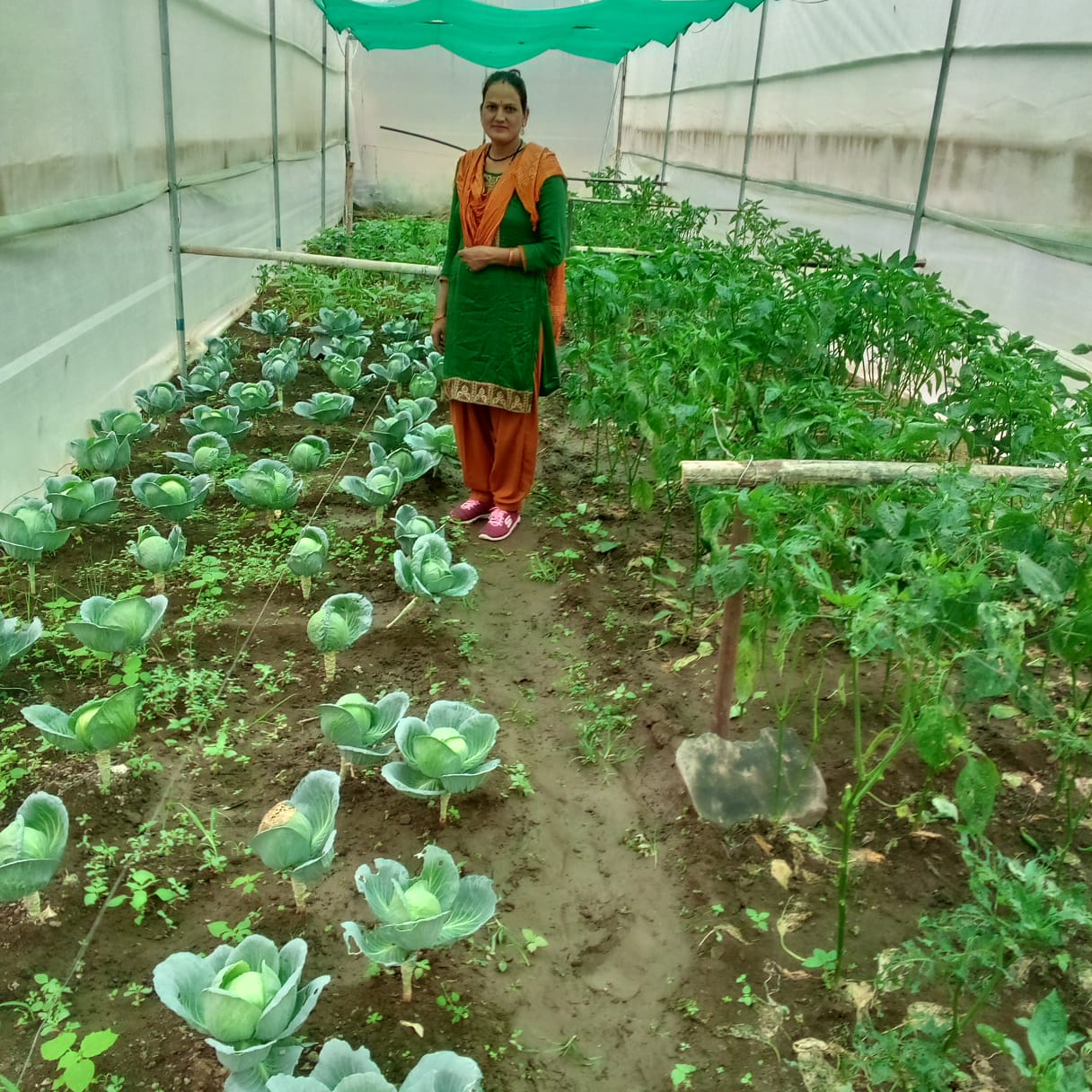 The Hans Mahila Kisan Nursery initiative has made significant strides in both environmental conservation and the economic vitality of Goom Village. In terms of environmental impact, the nursery has successfully cultivated a range of native plant species, including 10,000 Baanj (Oak) saplings and 6,000 Kachnar saplings, contributing to the restoration of local biodiversity and ecosystem health. This effort supports reforestation, combats soil erosion, enhances air quality, and restores wildlife habitats. Additionally, the initiative plays a crucial role in forest fire prevention by growing vegetation that helps reduce fire risks, which is particularly important given the area's challenges with forest fires. The nursery has also fostered community awareness through village meetings that emphasize environmental conservation and sustainable practices, thereby promoting a proactive community spirit.
The Hans Mahila Kisan Nursery initiative has made significant strides in both environmental conservation and the economic vitality of Goom Village. In terms of environmental impact, the nursery has successfully cultivated a range of native plant species, including 10,000 Baanj (Oak) saplings and 6,000 Kachnar saplings, contributing to the restoration of local biodiversity and ecosystem health. This effort supports reforestation, combats soil erosion, enhances air quality, and restores wildlife habitats. Additionally, the initiative plays a crucial role in forest fire prevention by growing vegetation that helps reduce fire risks, which is particularly important given the area's challenges with forest fires. The nursery has also fostered community awareness through village meetings that emphasize environmental conservation and sustainable practices, thereby promoting a proactive community spirit.
Economically, the nursery has created job opportunities for local residents, particularly women, thereby empowering them both socially and economically. The sale of approximately 5,000 saplings to the Block Development Office is anticipated to generate around INR 100,000, which will be reinvested into the nursery to support its ongoing operations and future expansion. This revenue generation is a key step towards establishing the nursery as a self-sustaining business, contributing positively to the local economy.
The impact of the initiative is further highlighted through personal testimonials. Smt. Rajni Devi, President of the nursery committee, shared, “This initiative has empowered women in our village and given us a reliable source of income.” Shri Prem Singh, the committee Secretary, added, “The revenue from sapling sales will help us enhance the nursery and offer better training to our members.” A local villager said, “We see the positive changes in our environment and are proud to contribute to a better future through this initiative.” These outcomes and testimonials underscore the initiative's success in driving meaningful change both environmentally and economically within the community.
Reflection on Success Factors
The Hans Mahila Kisan Nursery's success stemmed from several key factors. It significantly contributed to environmental conservation by cultivating native species like 10,000 Baanj (Oak) and 6,000 Kachnar saplings, aiding reforestation, enhancing biodiversity, and mitigating forest fire risks. The initiative also improved air quality and restored wildlife habitats. Economically, it created jobs, particularly for women, and generated about INR 100,000 from sapling sales, which will be reinvested to support and expand the nursery.
Community involvement was crucial, with testimonials reflecting its impact: Smt. Rajni Devi motioned the empowerment of women, Shri Prem Singh highlighted the benefits of revenue for nursery improvement, and a local villager praised the environmental benefits. The initiative’s success underscores the value of integrating community engagement with environmental and economic goals.
Insights for the Social Impact Sector
The success of the Hans Mahila Kisan Nursery highlights several key factors and collaborative efforts. Strong leadership from Smt. Rajni Devi and her committee, combined with The Hans Foundation’s support for training and resources, was crucial. Active community involvement, especially by women, fostered ownership and sustainability. Additionally, comprehensive training and effective financial management were essential.
Collaboration and a unified vision for environmental and economic goals drove significant progress. The community’s adaptability and willingness to learn from challenges were critical for continuous improvement.
Key lessons for future initiatives include prioritizing ongoing training, engaging local stakeholders for support and resources, implementing sound financial planning, encouraging community ownership, and promoting adaptability and resilience. These elements are fundamental for ensuring the long-term success of similar projects.
Moreover, the initiative provides valuable insights for the social impact sector, particularly regarding scalability, replicability, and sustainable development:
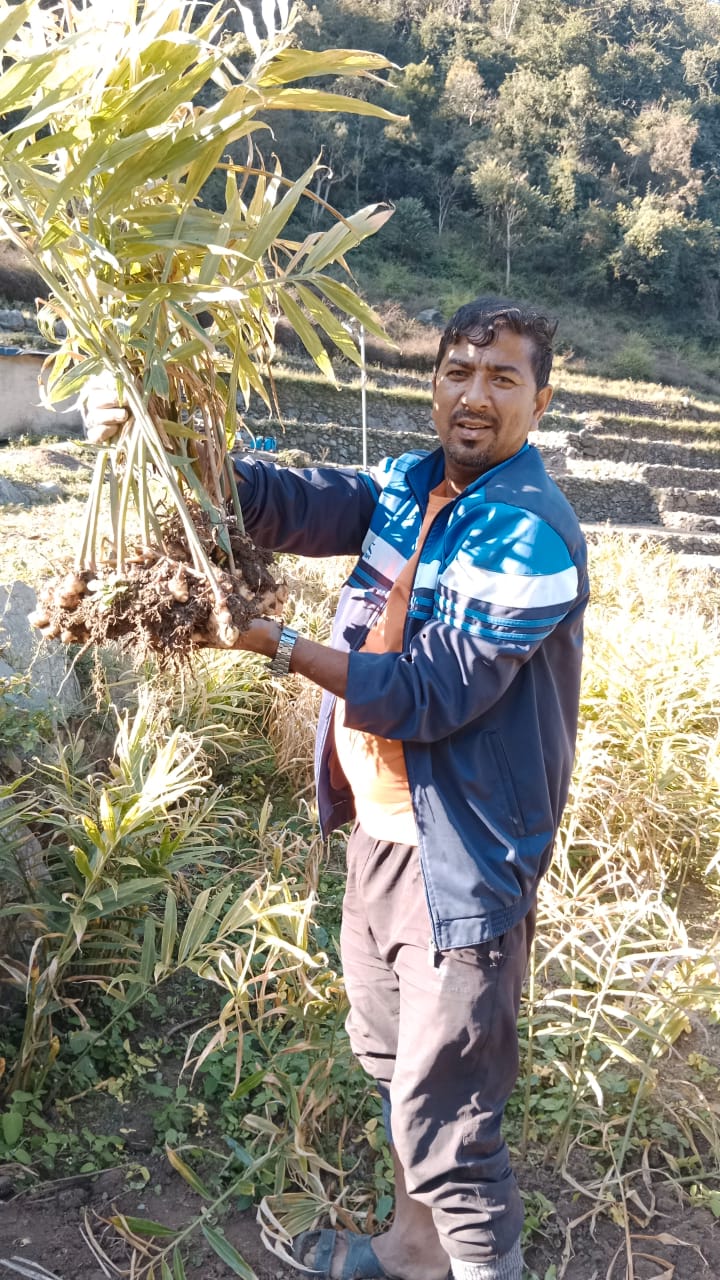 - Community-Centric Approach: Engaging community members in both planning and execution fosters ownership, which is critical for sustainability. Tailoring solutions to local needs ensures greater acceptance and success.
- Community-Centric Approach: Engaging community members in both planning and execution fosters ownership, which is critical for sustainability. Tailoring solutions to local needs ensures greater acceptance and success.
- Capacity Building and Training: Investing in skill development through comprehensive training equips community members with essential management skills. Encouraging continuous learning helps adapt to challenges and improves practices, enhancing scalability.
- Financial Sustainability: Effective financial management, including savings accounts and transparent budgeting, ensures initiative longevity. Revenue-generating activities provide steady income, supporting sustainability and offering a model for replication.
- Partnerships and Collaboration: Building strong partnerships with local stakeholders and leveraging external support can amplify impact and facilitate scalability. Collaborative efforts enhance resource access and initiative visibility.
- Scalability and Replicability: Documenting best practices and creating flexible frameworks tailored to different contexts can aid in replicating successful models. Sharing insights and adapting frameworks to local conditions increase the likelihood of success in new locations.
- Long-Term Vision and Impact: Aligning initiatives with Sustainable Development Goals (SDGs) and implementing robust monitoring and evaluation mechanisms ensure long-term relevance and effectiveness. Continuous assessment allows for necessary adjustments and improvements.
Future Outlook and Strategic Goals
Looking ahead, The Hans Foundation has outlined several ambitious goals for the Hans Mahila Kisan Nursery. Ms. Singh emphasizes, "Our long-term objectives include ensuring sustainability by generating enough revenue to cover costs and support expansion. We plan to boost production to 30,000 saplings and further empower the community. Additionally, we aim to replicate this success in other regions by documenting our approach and strengthening partnerships with local stakeholders."
The future vision for the nursery involves strategic expansion and sustained community empowerment. The foundation will focus on scaling operations, enhancing sustainability, and exploring opportunities to replicate the model in other regions for broader impact.



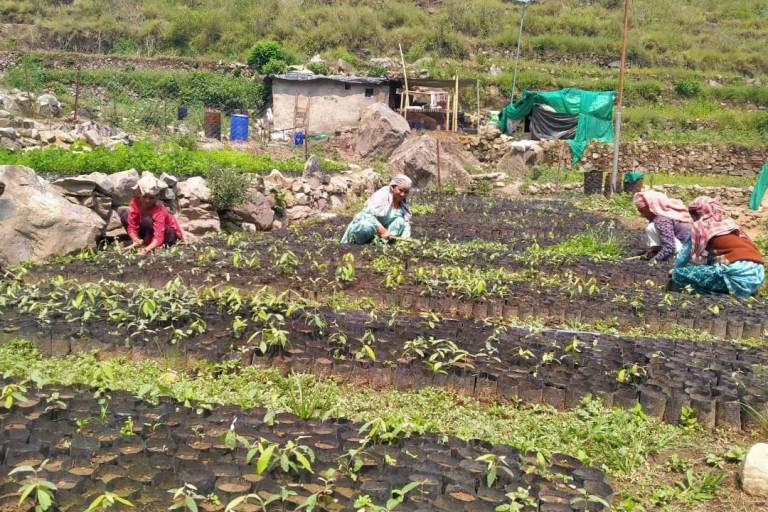
 The Hans Foundation’s decision to support the nursery initiative in Goom Village was driven by a combination of factors reflecting their commitment to community-led environmental and economic solutions. Ms. Seema Singh, Group Senior Manager - North Region at The Hans Foundation, explains, "The Hans Foundation was motivated to support the Goom village nursery initiative because it was a community-led initiative, reflecting the residents' commitment to tackling local environmental and economic issues. We were particularly interested in how the initiative addressed deforestation and forest fire risks while creating sustainable livelihoods, especially for women. Additionally, the opportunity to build local capacity through training and resources aligned with our mission to empower grassroots initiatives."
The Hans Foundation’s decision to support the nursery initiative in Goom Village was driven by a combination of factors reflecting their commitment to community-led environmental and economic solutions. Ms. Seema Singh, Group Senior Manager - North Region at The Hans Foundation, explains, "The Hans Foundation was motivated to support the Goom village nursery initiative because it was a community-led initiative, reflecting the residents' commitment to tackling local environmental and economic issues. We were particularly interested in how the initiative addressed deforestation and forest fire risks while creating sustainable livelihoods, especially for women. Additionally, the opportunity to build local capacity through training and resources aligned with our mission to empower grassroots initiatives." The training provided to the committee members of the Hans Mahila Kisan Nursery was comprehensive and covered essential aspects of nursery management. The specific training modules included:
The training provided to the committee members of the Hans Mahila Kisan Nursery was comprehensive and covered essential aspects of nursery management. The specific training modules included: The Hans Mahila Kisan Nursery initiative employed several effective community engagement tools and methods. Village-level meetings were regularly organized to discuss the initiative's objectives and the importance of forest fire prevention, serving as a platform for information sharing and community involvement. Open forums allowed community members to participate in discussions about the nursery's establishment and management, promoting transparency and inclusivity.
The Hans Mahila Kisan Nursery initiative employed several effective community engagement tools and methods. Village-level meetings were regularly organized to discuss the initiative's objectives and the importance of forest fire prevention, serving as a platform for information sharing and community involvement. Open forums allowed community members to participate in discussions about the nursery's establishment and management, promoting transparency and inclusivity. The Hans Mahila Kisan Nursery initiative has made significant strides in both environmental conservation and the economic vitality of Goom Village. In terms of environmental impact, the nursery has successfully cultivated a range of native plant species, including 10,000 Baanj (Oak) saplings and 6,000 Kachnar saplings, contributing to the restoration of local biodiversity and ecosystem health. This effort supports reforestation, combats soil erosion, enhances air quality, and restores wildlife habitats. Additionally, the initiative plays a crucial role in forest fire prevention by growing vegetation that helps reduce fire risks, which is particularly important given the area's challenges with forest fires. The nursery has also fostered community awareness through village meetings that emphasize environmental conservation and sustainable practices, thereby promoting a proactive community spirit.
The Hans Mahila Kisan Nursery initiative has made significant strides in both environmental conservation and the economic vitality of Goom Village. In terms of environmental impact, the nursery has successfully cultivated a range of native plant species, including 10,000 Baanj (Oak) saplings and 6,000 Kachnar saplings, contributing to the restoration of local biodiversity and ecosystem health. This effort supports reforestation, combats soil erosion, enhances air quality, and restores wildlife habitats. Additionally, the initiative plays a crucial role in forest fire prevention by growing vegetation that helps reduce fire risks, which is particularly important given the area's challenges with forest fires. The nursery has also fostered community awareness through village meetings that emphasize environmental conservation and sustainable practices, thereby promoting a proactive community spirit. - Community-Centric Approach: Engaging community members in both planning and execution fosters ownership, which is critical for sustainability. Tailoring solutions to local needs ensures greater acceptance and success.
- Community-Centric Approach: Engaging community members in both planning and execution fosters ownership, which is critical for sustainability. Tailoring solutions to local needs ensures greater acceptance and success.

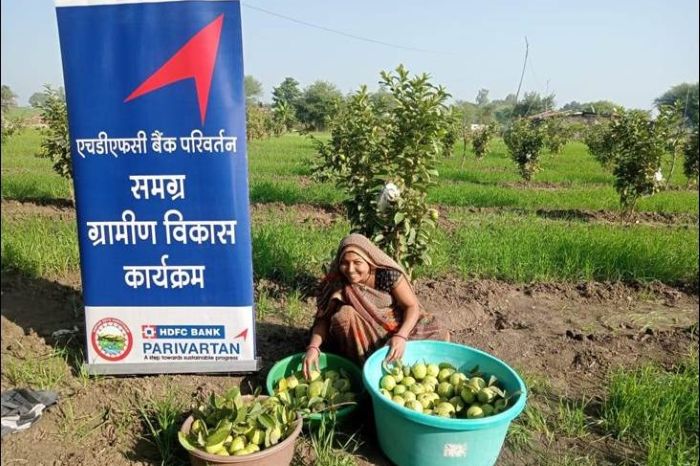
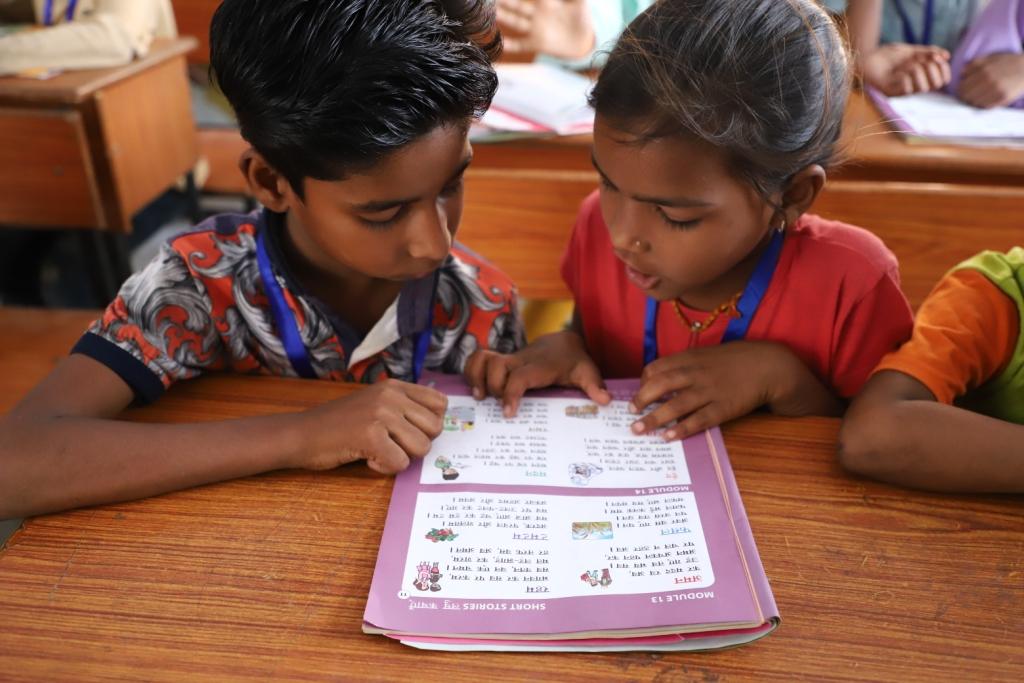
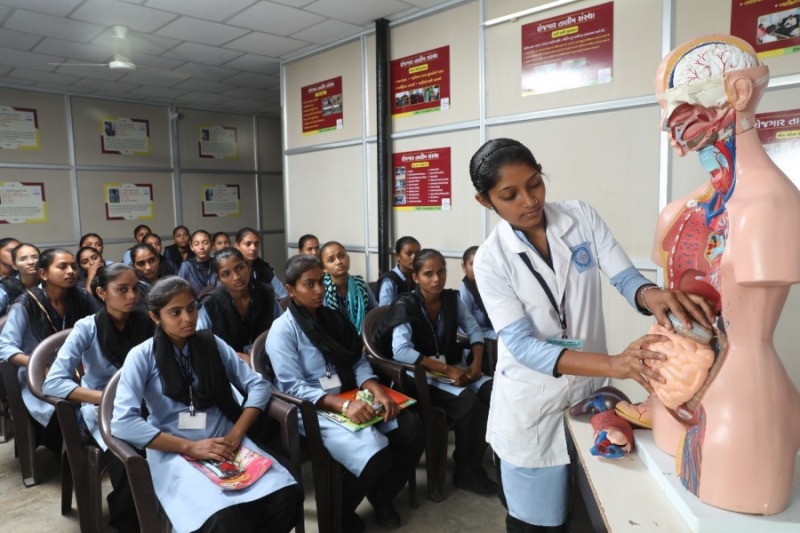



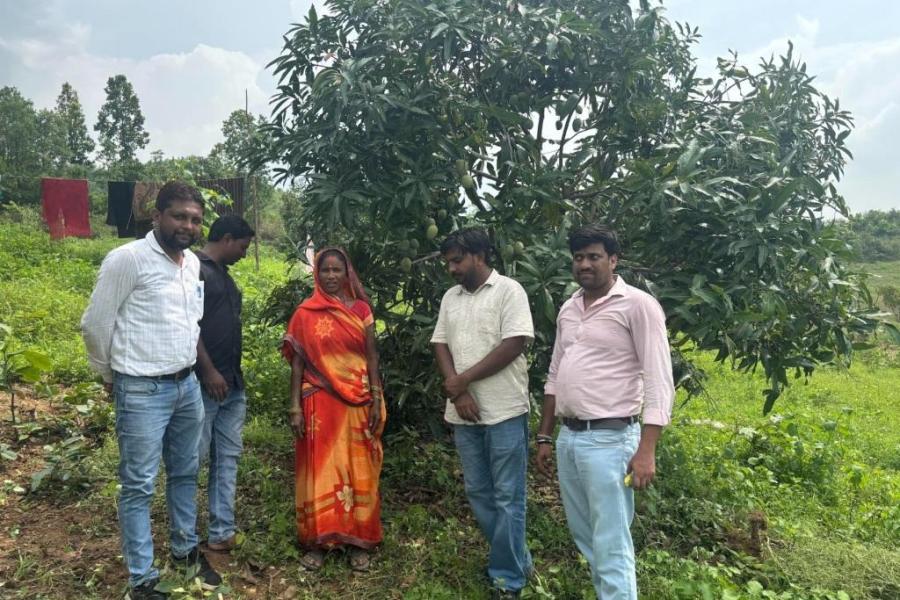

.jpg)




